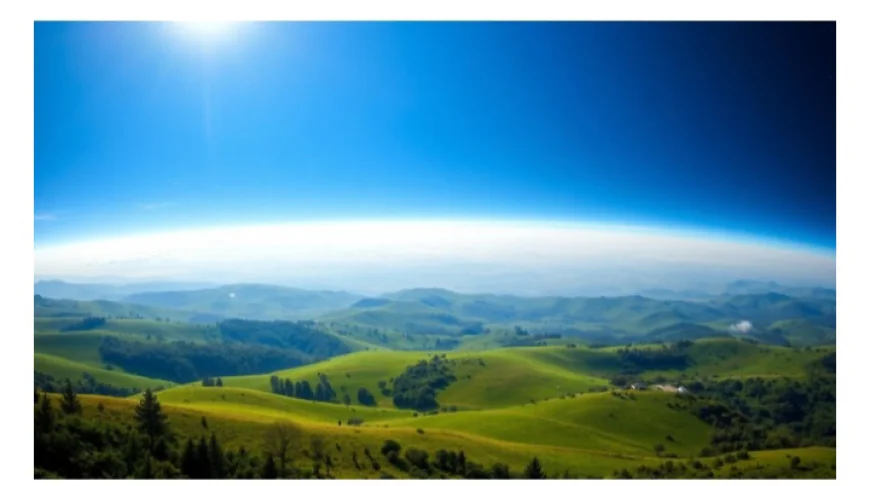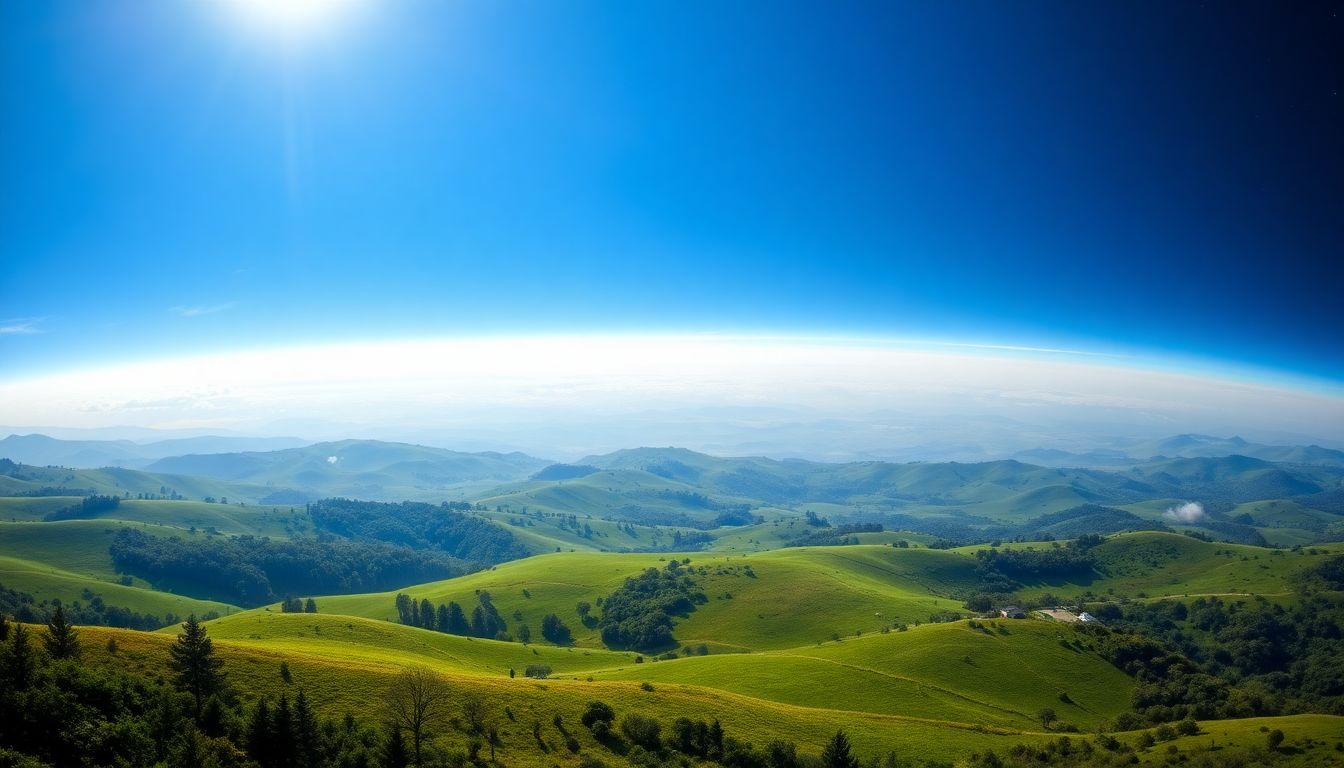Why Is the Sky Blue? Understanding Light, Atmosphere, and Space’s Darkness
Have you ever stared up and wondered why the daytime sky is bright blue, while space beyond seems endlessly black? It’s a common question that stirs curiosity in many. We see through Earth’s atmosphere into space every day, but the view is so different. One looks colorful and vibrant, the other dark and mysterious. Understanding how light interacts with the air around us helps explain this visual contrast. This article explores the science behind the sky’s blue hue and why space remains pitch-black.


Why Is the Sky Blue? Understanding Light, Atmosphere, and Space’s Darkness
Introduction
Have you ever stared up and wondered why the daytime sky is bright blue, while space beyond seems endlessly black? It’s a common question that stirs curiosity in many. We see through Earth’s atmosphere into space every day, but the view is so different. One looks colorful and vibrant, the other dark and mysterious. Understanding how light interacts with the air around us helps explain this visual contrast. This article explores the science behind the sky’s blue hue and why space remains pitch-black.
The Nature of Light and Its Interactions with the Atmosphere
What Is Light and How Does It Travel?
Light is a form of electromagnetic radiation that travels in waves. It covers a broad spectrum, with visible light being just a tiny part. When sunlight reaches Earth, it encounters gases, dust, and other tiny particles in the air. These particles influence how light moves and changes direction. When sunlight hits the atmosphere, some of it is scattered, reflected, or absorbed. This process shapes what we see when we look up at the sky.
Rayleigh Scattering: Why the Sky Is Blue
The main reason the sky appears blue involves a process called Rayleigh scattering. That occurs when sunlight hits particles smaller than its own wavelength, like nitrogen and oxygen molecules in our air. Shorter wavelengths of light—think blue and violet—scatter much more than the longer red and yellow wavelengths. In fact, blue light is scattered about ten times more effectively than red light. This means when you look up, your eyes pick up a lot of the scattered blue light, making the sky look sky-blue rather than other colors.
The Role of Atmospheric Composition
Earth’s atmosphere is mainly made up of nitrogen (78%) and oxygen (21%), with tiny amounts of other gases and particles. These composition differences influence how much light is scattered at different heights and locations. The density of air changes with altitude, making the scattering effect stronger closer to the ground. This variation gives us different sky colors at different times and places.
Why the Sky Appears Blue During the Day
The Dominance of Blue Light Scattering
Because blue light scatters more efficiently, it dominates what we see in the sky, especially during midday when the Sun is high. Our eyes are most sensitive to blue, which also makes the sky appear bright and vibrant to us. Violet light, even though it scatters equally, isn't as visible because our eyes are less sensitive to it. That’s why the sky doesn’t look violet despite similar scattering.
The Effect of Sun Position and Atmospheric Conditions
As the Sun moves lower in the sky during morning and evening, sunlight travels through more atmosphere. This causes more scattering of the blue and violet light, leaving behind reds and oranges. That’s why sunsets and sunrises often glow with warm colors. Humidity, dust, and pollution also change the sky’s appearance, sometimes making it dull or hazy.
Why the Sky Is Not Always Blue
Colors of the sky vary based on weather and time. Stormy weather blocks sunlight, turning the sky gray or dark. At sunrise or sunset, the sky changes to reds and oranges. The presence of particles like pollution can deepen or dull the blue, or even turn the sky an ugly shade. These natural shifts keep our sky ever-changing and fascinating.
Why We Can See Through the Atmosphere Into Space, Which Is Black
The Transparency of the Atmosphere
Earth’s atmosphere is generally transparent for most light, allowing us to gaze into space. The gases and tiny particles let sunlight pass through mostly unimpeded, especially when looking away from the Sun. That’s why we see stars at night and can observe planets and the moon.
The Darkness of Space: An Infinite Vacuum
Space looks black because it is mostly empty, with no air or particles to scatter light. It’s a vast vacuum where no molecules exist to bounce sunlight around. Without the scattering effect, sunlight doesn’t get diffused, leaving the void behind pitch-black. That’s why stars shine so brightly against a dark background, and why space appears black to our eyes.
The Contrast Between Sky and Space
The key difference comes from the presence or absence of scattering. Earth’s atmosphere is packed with tiny particles that spread sunlight across our sky. In space, with no particles to bounce light, the vacuum looks totally black. You can think of the atmosphere like a giant diffuser, while space is an empty, pitch-black canvas.
Additional Factors Affecting the Visibility and Color of the Sky
Atmospheric Pollution and Its Impact
Pollution plays a big role in the sky’s brightness and hue. Aerosols, smog, and dust can scatter different wavelengths of light, dulling natural blue tones or obscuring stars at night. Urban areas tend to have more pollution, which makes skies appear more gray or hazy compared to clear rural skies.
Light Pollution and Its Effect on Astronomical Visibility
Artificial lights from cities and street lamps cause light pollution, washing out stars and dimming the night sky. If you want to see a clear, starry night, heading to a dark place away from city lights provides better views. It’s a simple way to appreciate how natural the night sky can be when we limit artificial lighting.
The Science Behind Sunset and Sunrise Colors
When the Sun is low, sunlight passes through a thicker layer of atmosphere. The scattering of longer wavelengths like reds and oranges becomes dominant, creating stunning sunrise and sunset hues. This plentiful scattering during low sun angles makes our sky glow with warm colors, a beautiful reminder of light’s interactions with air.
Conclusion
The sky’s blue color comes from light scattering. Tiny air molecules spread shorter blue wavelengths more than others, making us see a blue sky. Space, by contrast, looks dark because it lacks particles to scatter sunlight. Its vast emptiness leaves behind the blackness we see. Recognizing how atmospheric composition and light scattering shape our environment helps us appreciate these natural wonders.
Next time you gaze up at the sky, consider how atmospheric science makes those colors possible. Whether it’s a bright day, a fiery sunset, or a starry night, understanding these processes adds new depth to your view of the universe. So, look up, explore, and enjoy the stunning science behind what you see.



 VARSHITHA
VARSHITHA